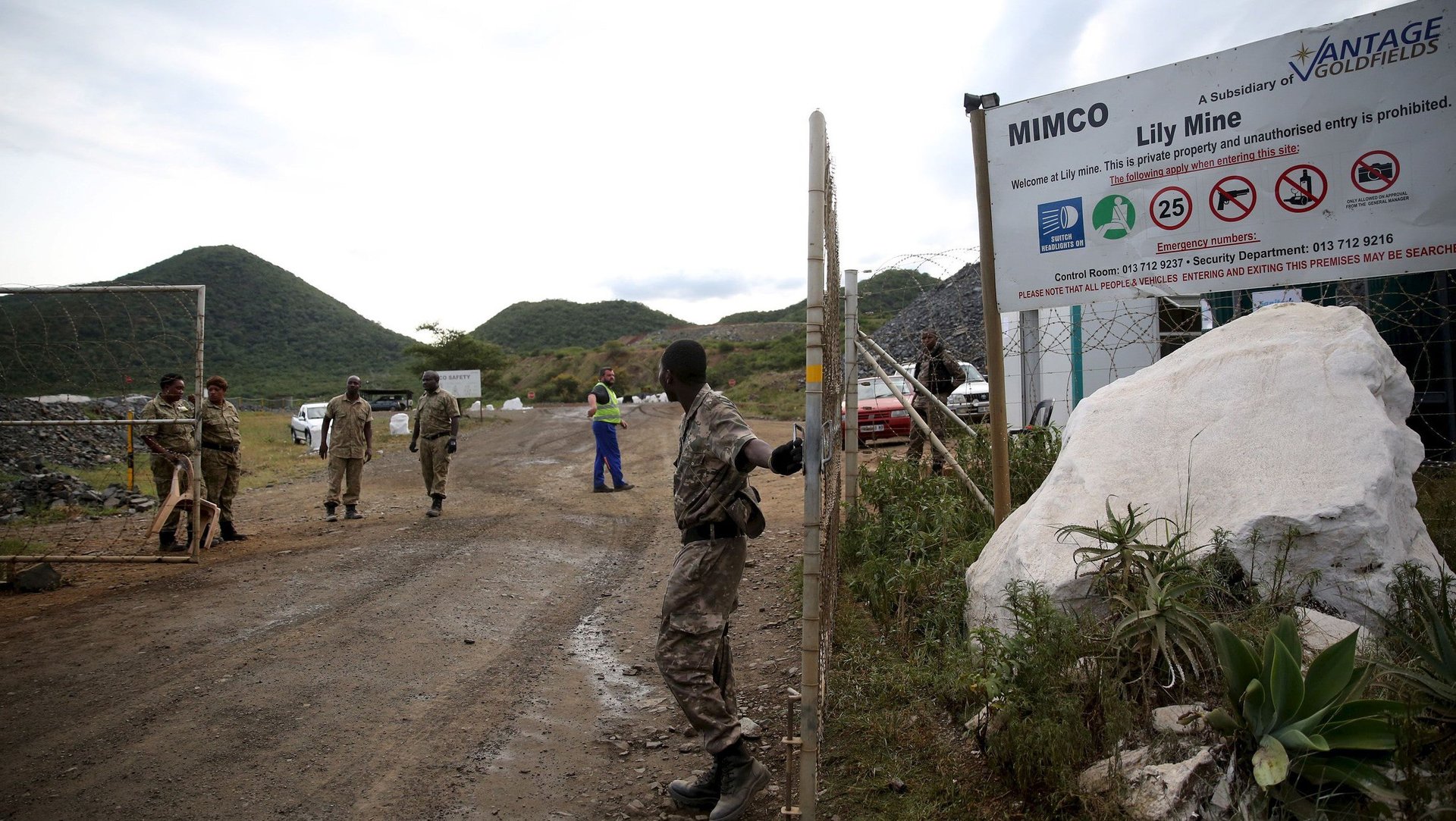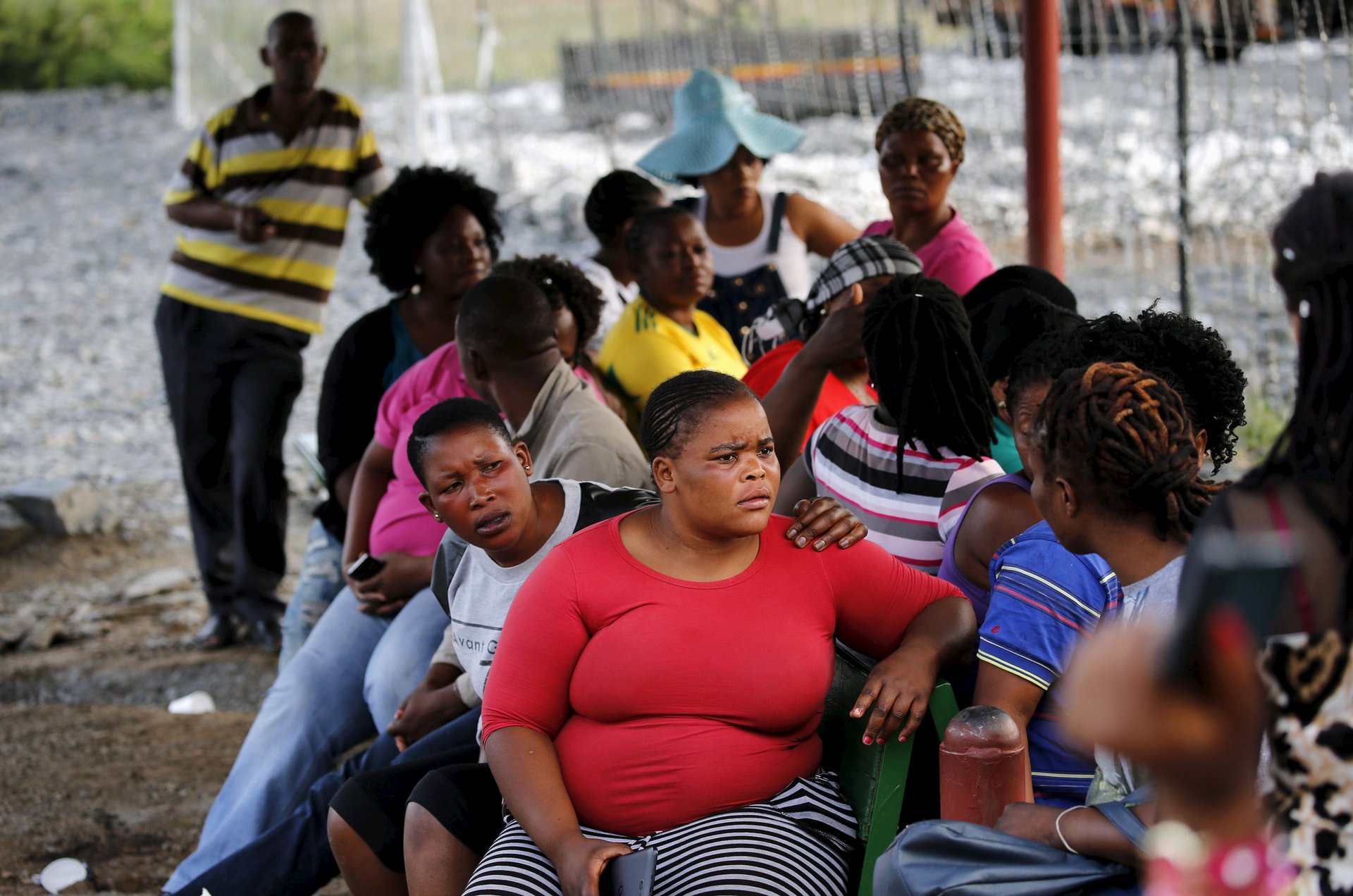South Africa is dependent on my father’s work, and I’m terrified it will kill him
When I was a child, my father used to tell my brothers and I that the mine in South Africa where he has worked for more than 30 years was interminable. That as we slept, he was drilling underneath our house, and in this way, watching over us. It was a way to comfort us, even though we knew that it was probably untrue.


When I was a child, my father used to tell my brothers and I that the mine in South Africa where he has worked for more than 30 years was interminable. That as we slept, he was drilling underneath our house, and in this way, watching over us. It was a way to comfort us, even though we knew that it was probably untrue.
As a child of a mineworker, I am constantly worried every time my father goes underground. How can I not when mines appear to be accidents waiting to happen? They’re prone to slips, trips, and falls, electrical issues, chemical leaks or spills, machine and equipment malfunctions and fires.
My father wasn’t shocked when he heard 90 workers had been trapped underground in a collapse at the Lily Mine in the South African province of Mpumalanga on Feb. 5. Most were subsequently rescued, but three workers remain underground, a week later. “It happens,” he told me when I spoke to him on the phone. He had the same response when I spoke to him about the Marikana massacre, where 34 mineworkers were shot dead by the police at the Lonmin Mine in 2012. This is not indifference, this is the effect that mines have on him, after working there for so long. He was not yet 20 when he dropped out of school to work in the mines, wrapping a cloth around his head to make his safety helmet fit.
Even though the minerals sector contributes about 263 billion rand ($16.6 billion) to South Africa’s economy, or around 9% of GDP according to the Department of Trade and Industry, mineworkers feel their lives are not worth much. Death, if it comes at a mine, is as natural as the sun rising.
The Lily Mine collapsed around 8am on a Friday, at the start of the morning shift. A main pillar gave way into a 100-meter (340-foot) long sinkhole, burying the miners and swallowing three people who were above ground inside a container office where miners collect their lamps and safety gear, the last stop before going underground. Four days after the collapse, the rescue team heard knocking, raising hope that the workers were still alive and giving the rescue operation renewed urgency as they struggled to clear debris and hard rock to gain access to the container. It is now over 90 hours since the mineworkers showed any signs of being alive.

Families of the remaining mineworkers have been sleeping outside the mine, hoping and praying for good news. The hoping and praying is familiar to me. Thankfully, my father has never been in a mine accident at the Sigma Colliery where he works, in the small coal mining town of Sasolburg, an hour outside of Johannesburg. But every time he goes to work, he is a slip away from being buried underground. The images of the women, waiting outside Lily Mine, remind me of my own mother’s nervous goodbyes to my father when he went to work.
During my father’s night shifts, my brothers and I would walk him to work, carrying his work clothes. The mine provides hostel housing for workers, built on layers of coal dust. I remember how he would go into the changing rooms and emerge unrecognizable, in his orange overalls, safety belts, helmet, torch and boots. As he made his way to the bus, walking in a queue with all the other men, we had to pick him out of the pack. There were days we failed, unless he waved at us. The men were all dressed the same. I knew then that no one goes to a safe place dressed like that and like my mother, I would send him off with a nervous wave.
The fact that my father’s mine hasn’t experienced an accident of significance besides a rock dropping here and there, and a broken water pipe leaving him up to his knees in water, doesn’t bring him—or his family—any comfort. Neither had the Lily Mine, according to Mayor of Umjindi Municipality, Lazaros Mashaba. The mine was opened as an oxide open pit operation in 2000 before its owners, Vantage Goldfields, turned it into a shallow underground operation.
South Africa’s mines are the deepest in the world, and despite a reduction of fatalities by 88% since 1994 due to improved safety practices and declining production, dozens of miners still die each year—and the numbers might be even higher for people mining illegally. South Africa’s Department of Mineral Resources recorded 77 fatalities at mines in 2015, a slight improvement from the 84 the year prior. This year has already seen one other major accident aside from the Lily Mine collapse; a Jan. 22 fire in an underground shaft at a platinum mine which killed four miners. The department’s goal is “zero harm,” South Africa’s mining minister Mosebenzi Joseph Zwane said in a recent statement. “It is imperative that each mineworker returns home, unharmed, every day.”
Lily Mine’s trapped workers—and the thousands of miners who risk their lives everyday, including my father—are in my heart.
Gold was discovered in the Witwatersrand in June 1884, on the farm Vogelstruisfontein. A subsequent gold rush led to the development of Johannesburg, which is still referred to by locals as the “City of Gold.” Since then, mineworkers have not only been vital to South Africa’s economic success, but have made invaluable political and cultural contributions.
Whilst rescuers raced to reach the three miners at Lily Mine, the Mining Indaba, where big mining bosses meet to talk big money, was taking place in Cape Town. Nothing could have painted the dichotomy of mineworkers and mine owners more clearly. Zwane, South Africa’s third Minister of Mineral Resources in three years, reiterated the importance of safety to Indaba’s 7,000 delegates. “Whilst we may be heartened by the health and safety performance achieved in recent times, we cannot be complacent,” Zwane said. “We urge organized business and labour to take extraordinary measures in protecting human life.”
The mining industry, according to a 2013 paper (pdf), directly employs about 500,000 workers in South Africa, and half a million more who are indirectly involved in mining-related activities. Each person employed has up to nine indirect dependents, according to the mining employer’s organization, the Chamber of Mines. Prior to reaching a wage agreement (pay wall) last year, entry-level gold miners earned around 6,000 rand a month (approximately $435 at the time) and unions have used strike action to push hard against the country’s gold and platinum producers. Companies facing weaker commodity prices, declining production, increased costs and complex union structures and legislation have struggled to navigate the impasse.
There are some good stories to remember from my childhood. My father would come home from his shift sometimes and be shocked that there was a thunderstorm above ground. Under the mine, it is a completely different world, ventilated but still buried miles under the earth. The mine also taught my father how to speak and write English. In his old age, he beamed with a smile every time he attended class or did homework at home. The good stories are, however, scarce. The few that exist, as comforting as they might appear, are quickly replaced by the anger at how little my father is paid each week for the risks that he undertakes. For years, I witnessed my father drowning in debt, witnessed how money came in and went out to pay loan sharks to keep us going until the next pittance.
The daily struggle of mineworkers shows me the industry is far from transformed. Today, most mines are also populated by the children of the mineworkers, in part because there are few other options in a country with 25% unemployment rate. I escaped that fate and landed on this one, writing. I fought against the strong force that constantly pulls at you as you grow up into a world with few prospects. Many of the friends I grew up with were not as lucky. The force was too strong, they let go of their dreams and now they too, like their fathers and grandfathers, work underground.
I hope their children will never have to live with the fears I did growing up—and the grim reality facing the Lily Mine workers today.